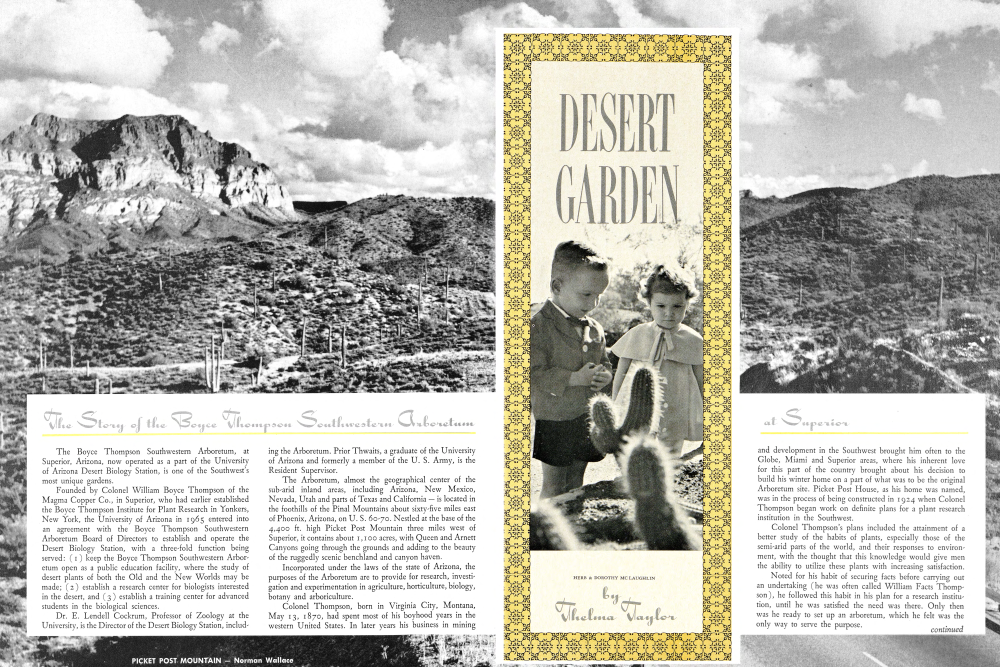JACK WILLIAMS, ARIZONA'S NEW GOVERNOR

The Story of the Boyce Thompson Southwestern Arboretum
The Boyce Thompson Southwestern Arboretum, at Superior, Arizona, now operated as a part of the University of Arizona Desert Biology Station, is one of the Southwest's most unique gardens.
Founded by Colonel William Boyce Thompson of the Magma Copper Co., in Superior, who had earlier established the Boyce Thompson Institute for Plant Research in Yonkers, New York, the University of Arizona in 1965 entered into an agreement with the Boyce Thompson Southwestern Arboretum Board of Directors to establish and operate the Desert Biology Station, with a three-fold function being served: (1) keep the Boyce Thompson Southwestern Arboretum open as a public education facility, where the study of desert plants of both the Old and the New Worlds may be made; (2) establish a research center for biologists interested in the desert, and (3) establish a training center for advanced students in the biological sciences.
Dr. E. Lendell Cockrum, Professor of Zoology at the University, is the Director of the Desert Biology Station, includ-ing the Arboretum. Prior Thwaits, a graduate of the University of Arizona and formerly a member of the U. S. Army, is the Resident Supervisor.
The Arboretum, almost the geographical center of the sub-arid inland areas, including Arizona, New Mexico, Nevada, Utah and parts of Texas and California - is located in the foothills of the Pinal Mountains about sixty-five miles east of Phoenix, Arizona, on U. S. 60-70. Nestled at the base of the 4,400 ft. high Picket Post Mountain three miles west of Superior, it contains about 1,100 acres, with Queen and Arnett Canyons going through the grounds and adding to the beauty of the ruggedly scenic benchland and canyon haven.
Incorporated under the laws of the state of Arizona, the purposes of the Arboretum are to provide for research, investigation and experimentation in agriculture, horticulture, biology, botany and arboriculture.
Colonel Thompson, born in Virginia City, Montana, May 13, 1870, had spent most of his boyhood years in the western United States. In later years his business in mining and development in the Southwest brought him often to the Globe, Miami and Superior areas, where his inherent love for this part of the country brought about his decision to build his winter home on a part of what was to be the original Arboretum site. Picket Post House, as his home was named, was in the process of being constructed in 1924 when Colonel Thompson began work on definite plans for a plant research institution in the Southwest.
DESERT GARDEN at Superior
Colonel Thompson's plans included the attainment of a better study of the habits of plants, especially those of the semi-arid parts of the world, and their responses to environment, with the thought that this knowledge would give men the ability to utilize these plants with increasing satisfaction.
Noted for his habit of securing facts before carrying out an undertaking (he was often called William Facts Thompson), he followed this habit in his plan for a research institution, until he was satisfied the need was there. Only then was he ready to set up an arboretum, which he felt was the only way to serve the purpose.
Already a member? Login ».